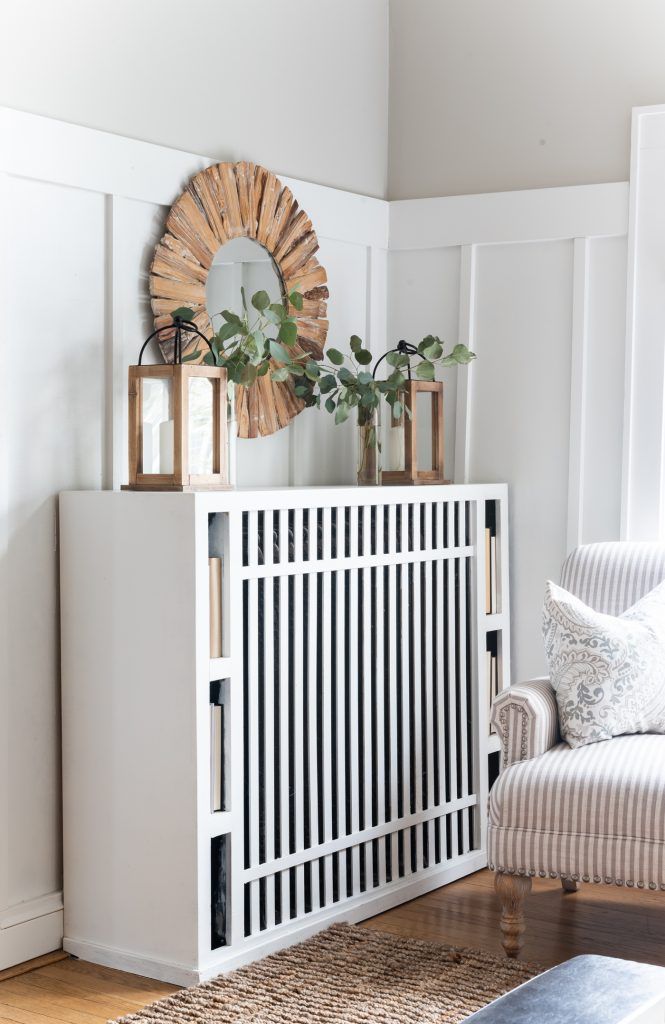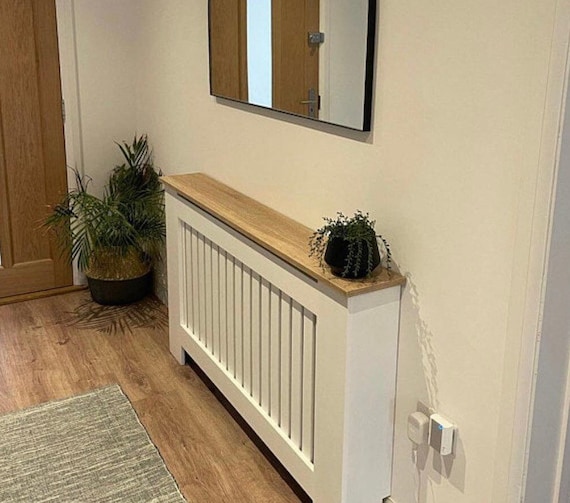Radiator Covers: Understanding Materials, Styles, and Benefits
Radiator covers serve both aesthetic and useful functions within a home, supplying a range of products such as metal, hardwood, and mdf to suit numerous layout choices. Picking the right radiator cover entails comprehending the nuances of materials, designs, and their connected benefits.
Kinds Of Products


Wood covers, usually crafted from woods such as oak or maple, provide a classic, cozy appearance that complements standard insides. Their toughness and capacity to be stained or repainted add to their convenience. Metal covers, usually made from steel or light weight aluminum, are favored for their toughness and modern-day look, usually featuring smooth lines that improve modern spaces.
MDF, a made wood product, is prominent for its cost-effectiveness and ease of personalization. It can be painted or ended up to match existing style while offering a smooth surface. Plastic covers, while less usual, are light-weight and resistant to dampness, making them appropriate for moist atmospheres.
Eventually, the choice of product for a radiator cover must align with the property owner's design choices, functional requirements, and the certain environment where the cover will be mounted. Each product supplies an unique character, ensuring that there is a choice to suit every preference and setting.
Popular Layout Styles
Stressing aesthetic allure, popular design styles for radiator covers show a series of tastes and indoor layout fads. Conventional styles often feature intricate woodwork and luxuriant describing, making them appropriate for timeless or vintage-inspired interiors. These covers commonly integrate sculpted elements, providing a warm and welcoming feel to any type of area.
On the other hand, contemporary designs concentrate on minimalist visual appeals, defined by clean lines and underrated elegance. Materials such as steel or smooth timber with a smooth coating are commonly used, enabling these covers to mix perfectly into modern spaces. Industrial designs, on the various other hand, welcome resources like revealed steel and concrete, including a strong statement to loft or urban settings.
For those seeking a distinct touch, bespoke styles offer customization alternatives that satisfy specific preferences, enabling homeowners to select colors, patterns, and materials that enhance their design. In addition, farmhouse-style covers incorporate rustic components, including troubled wood and straightforward types that stimulate a relaxing, country beauty.
Advantages of Radiator Covers
Radiator covers not only boost the visual appeal of an area however also use numerous useful advantages that make them a rewarding addition to any home. One of the key benefits is security, specifically in households with children or pets. Covers decrease the threat of burns from warm radiator surface areas, making sure a much safer atmosphere.
In addition, radiator covers can boost power efficiency. By guiding warmth right into the room as opposed to allowing it to escape, they aid keep a regular temperature, reducing heating prices gradually. This is my review here specifically helpful in older homes where radiator systems might be much less reliable.
An additional notable benefit is sound decrease. Radiators can often create unwanted sounds during procedure, and covers can aid stifle these noises, adding to an extra relaxed home. Radiator covers can be useful, offering additional storage or display screen area, therefore optimizing the utility of often-overlooked areas.
Lastly, they can shield radiators from dust and particles, which can hinder performance and boost upkeep needs. With these incorporated advantages, radiator covers become a practical option for boosting both the functionality and style of any home environment.
Installation Considerations
Setting up radiator covers calls for cautious consideration to make sure both capability and security (Radiator cover). Initially, evaluate the dimensions of your radiator and the surrounding room to ensure a proper fit. Exact dimensions are crucial; an uncomfortable cover can obstruct heat flow or create safety and security dangers
Next, review the product of the cover. While wood provides visual charm, steel options might provide much better durability and heat resistance. Take into consideration the weight of the cover too; much heavier covers may require additional assistance or supports to avoid drooping or damage over time.
Ventilation is another crucial aspect. Covers must include ample airflow to avoid getting too hot and preserve effective heating. Try to find designs with slats or openings that allow heat to flow without obstruction.
Additionally, make certain that the cover is firmly placed to avoid accidents, especially in homes with pet dogs or kids. Radiator cover. It's a good idea to follow the supplier's installment standards closely and, if needed, get in touch with a specialist for complicated installments
Maintenance and Treatment Tips
Correct maintenance of radiator covers is essential for ensuring their long life and optimal efficiency. For painted or timber covers, take into consideration a suitable gloss or protective layer to maintain their look.
Inspect the covers periodically for indicators of wear or damages, such as cracks or peeling paint. Addressing these concerns immediately can prevent more deterioration. Ensure that the covers are securely secured and look for any kind of loose screws or fittings, as vibrations from the radiator can loosen them with time.
In cooler months, avoid placing heavy objects or decorative items on top of the radiator covers, as this can hamper warm circulation and cause unneeded tension check out here to the structure. Consider seasonal maintenance by getting rid of the covers for extensive cleaning and inspection throughout warmer months when the heating system is inactive. Adopting these easy care ideas will certainly boost the performance and visual allure of your radiator covers, ensuring they offer their purpose efficiently for many years ahead.

Final Thought
In recap, radiator covers act as useful and visual enhancements to property areas. The diverse series of materials, including woods, plastic, mdf, and steel, enables positioning with different style styles such as conventional, contemporary, commercial, and farmhouse. The advantages of these covers extend past safety and power performance to consist of extra storage and dirt security. Cautious consideration of installation and upkeep additional makes certain the longevity and effectiveness of radiator covers in any home atmosphere.
Radiator covers offer both aesthetic and practical functions within a home, using an array of products such as mdf, wood, and steel to fit various design preferences. Choosing the ideal radiator cover includes recognizing the subtleties of products, layouts, and their associated advantages.Highlighting aesthetic appeal, prominent layout styles for radiator covers mirror an array of preferences and indoor layout fads.Radiator covers not just improve the aesthetic appeal of a room but likewise offer a number of sensible benefits that make them a worthwhile enhancement to any home. Think about the weight of the cover as well; heavier covers may Continue call for extra support or reinforcements to stay clear of drooping or damages over time.